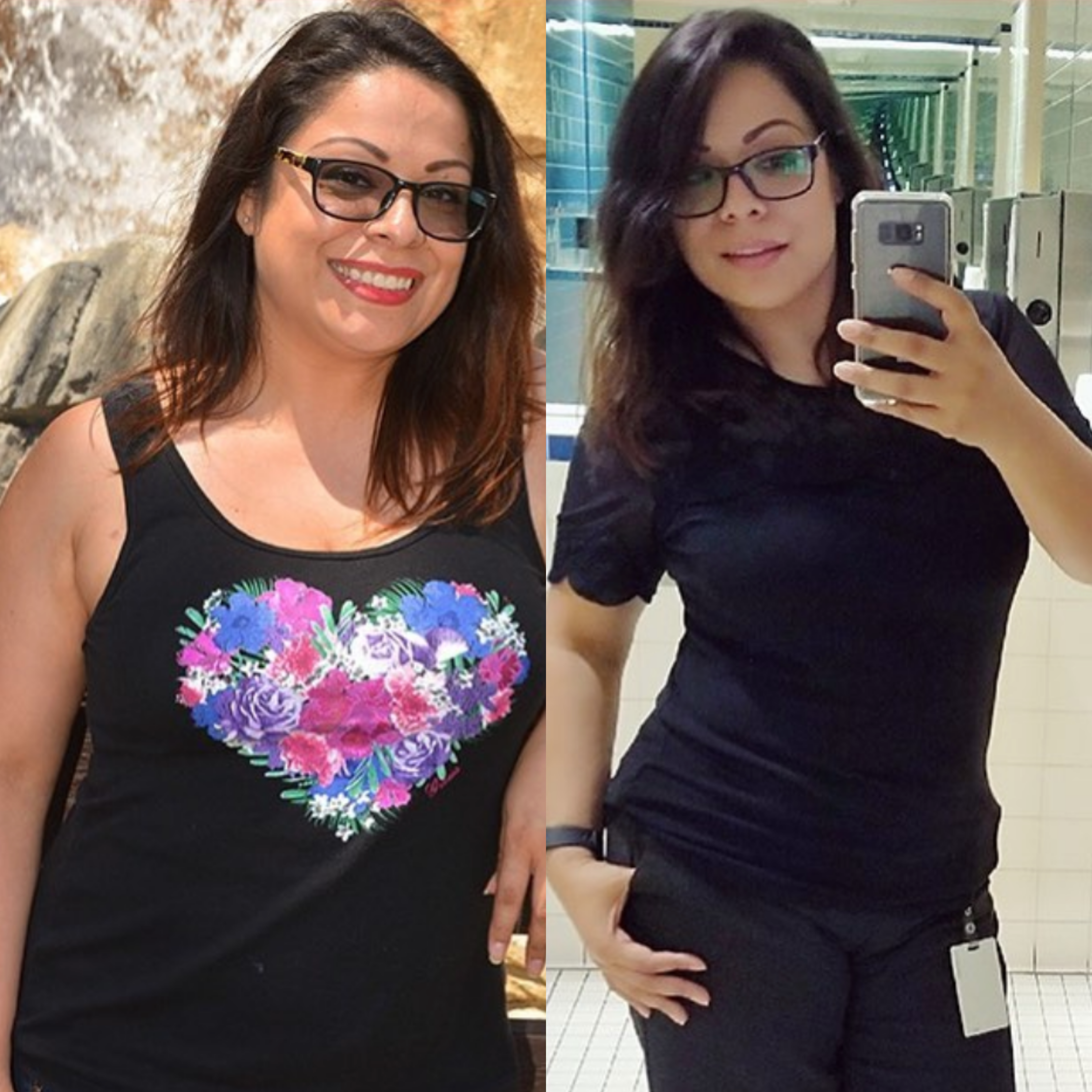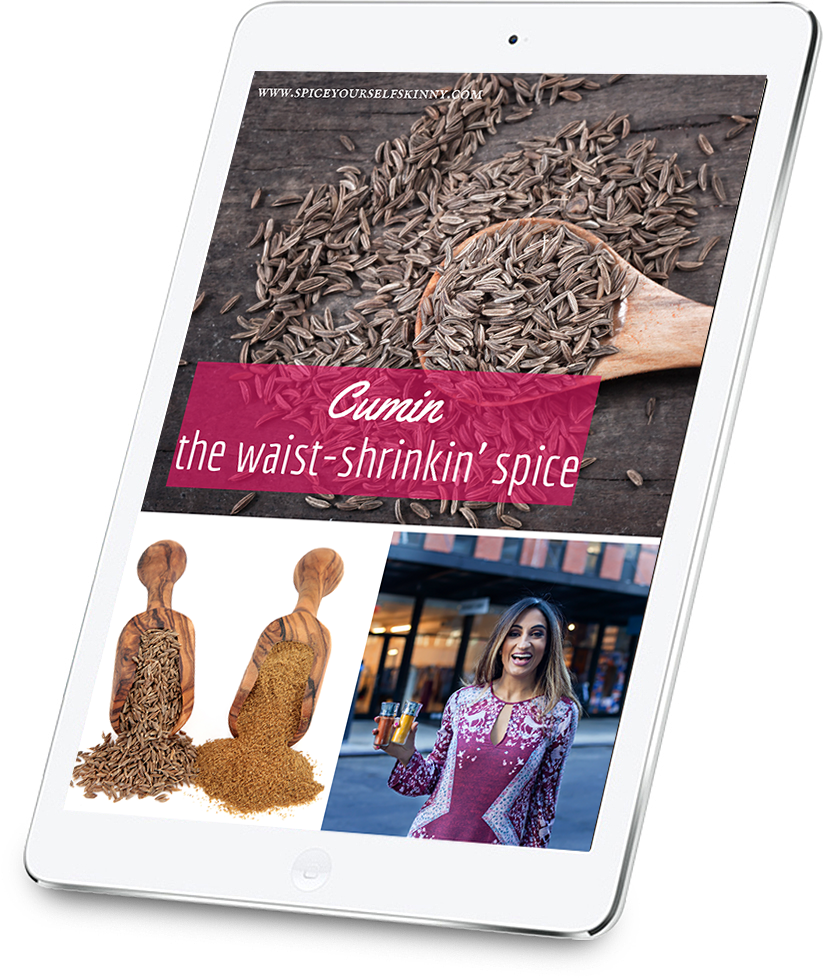Confession time: I didn’t take sodium content into consideration for way too long. A little salt can go a long way to add or bring out the flavor in food. But it can be easy to have too much. When I started to be more conscious of eating a low sodium diet (which is a natural part of eating anti-inflammatory foods) I noticed myself debloating.
A client of mine had a really tough time reducing her sodium intake, too. What made her salt addiction even worse was the fact that it made her so thirsty.
But because her taste buds were used to being over-stimulated by all the sodium, pure refreshing water didn’t cut it for her. She usually tried to quench her thirst with either regular or diet soda pop. Neither of which are helpful for weight loss.

Too much sodium can make losing weight really hard because your body holds onto extra water weight. This makes us feel even more bloated, which makes us not feel like exercising, which keeps us from burning excess calories and helping our bodies cleanse themselves.
In this post, I’ll talk about why a low sodium diet is an important part of living with a healthy weight and healthy body overall. Here’s what I’ll cover.
- What sodium does to keep your body clinging onto water weight
- How excess sodium can lead to edema and heart disease
- What is considered a low sodium diet
- Where hidden sodium lies
- What the “bliss point” is and how it’s being used to keep you addicted
- My top hacks for living a low sodium diet lifestyle
- Foods to eat, avoid, and the best low sodium diet recipes
how does sodium affect the body?
Sodium isn’t all bad. It’s actually a mineral our bodies need to balance our electrolytes, blood fluid balance, and support nerve and muscle function. (1)
But too much sodium can create excess fluid, not just on your belly, but around your heart and lungs. (1) It can even lead to serious health problems, like edema and heart failure. (3)
Extra salt causes water retention because your body naturally tries to keep a balanced ratio of water and salt on the exterior of your cell walls. When you eat salt, your body holds onto water to maintain that balance. (4)
Consuming 400 milligrams of sodium can cause your body to hold onto 4 cups of water, which is equal to about 2 pounds! It seems a little ironic, but this is the very reason why drinking more water helps you flush out water weight. When you add more water to the ratio, you rinse the extra salt away and this reduces bloating. This is because your body knows it can release the extra water in your cells. (4)
what is considered a low sodium diet
But the effects of sodium on the body go beyond not being able to button your jeans. Too much salt can trigger edema, which is caused by an imbalance of electrolytes leaning too far onto the sodium side.
When you’re eating more sodium than you need, and not drinking enough water, your body struggles to maintain the healthy ratio or balance between the two.
Edema is essentially an extreme version of water weight. Extra fluid collects in your feet and ankles. In severe cases, it even collects internally around your heart, lungs, and kidneys. (5) This causes pressure and can lead to more health issues, aside from being uncomfortable.
Excess sodium also affects your internal organs, specifically your heart, by increasing blood pressure. When blood pressure is too high (also known as hypertension) for too long, it can lead to heart attack and stroke. (4)
Heart disease is the number one cause of death for women in the U.S. and around the world. One of the most important things you can do for your heart is to reduce blood pressure, which means eating a low sodium diet. (6)
Don’t feel discouraged. There’s good news! If you change your lifestyle and start enjoying more low sodium foods and drinking more water, you can actually decrease your blood pressure levels within just a few weeks! (4)
3 Ways Ginger Tea Benefits Your Body, Speeds Recovery and Sharpens memory (+ Recipes!) Surprising herbal tea benefits and 8 caffeine-free teas (some you probably haven’t tried!) If you’ve been following me for a while, you’ll know that I’m a huge advocate for eating an anti-inflammatory diet. A low sodium diet has a lot in common with an anti-inflammatory diet. Both fresh whole foods and less processed food are staples for anti-inflammatory and low sodium diet lifestyles. It’s easy to think that adhering to a low sodium diet plan means putting the salt shaker into a cabinet out of reach. But most excess sodium comes in the sneaky form of processed and restaurant foods. (2) Processed food is basically anything that isn’t in its basic form. Anything packaged, bagged, canned or pre-cooked probably has a bit too much sodium. Sodium is added to processed and packaged foods to preserve it and prolong its shelf life. It also adds flavor to food that’s not fresh anymore. You might find your jaw dropping if you look at the sodium line on the nutrition label of a frozen lasagna package. The Center for Disease Control recommends keeping sodium intake below 2300 milligrams per day (about 1 teaspoon). 1500 milligrams a day is ideal, especially for people with heart problems. (3) Most people eat five or more teaspoons of salt, daily (7) without even realizing it. For example, one serving of frozen lasagna can have 800 mgs of sodium! (8) Just one slice of previously frozen lasagna cooked up for dinner will meet one third of your recommended sodium intake if you’re healthy. If you have heart problems, two slices of frozen lasagna already puts you over the limit by 100 milligrams. And that’s just one meal! Add in some salty eggs or packaged cereal for breakfast, and sandwich with bread and sodium-rich lunchmeat, and you’re way over your limit. If you bake fresh chicken breast baked in the oven at home, however, that only has about 70 milligrams of sodium. (9) One thing to watch out for with chicken and other meats is that sometimes they’re “enhanced.” This means they’re injected with saltwater and other additives to make the meat more plump, juicy and tasty. The best way to avoid this is to read the ingredients (yes, even on fresh chicken from the meat department) to make sure there’s no salt, chicken stock, or other ingredients added to it. Even enhanced chicken isn’t as bad as restaurant food, as far as sodium, though. Restaurant foods are usually very salty because they’re made with a lot of those packaged ingredients, premade sauces and mixes we talked about earlier. Restaurants also oversalt everything to make it more addicting. Especially when chefs and cooks make food with fat, salt, and sugar, it sets off the pleasure centers in our brains. This is known as “the bliss point” and it makes us crave that food again in the future. This is a great way to make sure we want to come back to their restaurant for more soon. (10) Pizza is a classic example of a “bliss point” food. It has a starchy crust made of refined white flour (sometimes even with sugar added to the dough), a sweet, salty tomato sauce (usually from a jar) and fatty, salty mozzarella cheese and salted, cured meats like pepperoni or sausage. You can see why pizza is one of our favorite foods, and why it’s not on the low sodium diet food list! One slice can have 660 milligrams of sodium. (11) And be honest, when did you ever have just one slice of pizza? 8 Scientific Studies That Prove Spices Help You Lose Weight The health benefits of cinnamon for weight loss (& beyond) Confucius knew the benefits of ginger. Do you know how to take advantage of its ancient power? Using spices like cilantro, cayenne and turmeric to cook flavorful, fresh foods at home are always great additions to traditional low sodium recipes. Spices also have compounds that can even block or help burn fat cells, which is a great way to help your body slim down (for example, check out the benefits of turmeric for weight loss & capsaicin for weight loss). Making delicious, low sodium diet meals can be very easy if you use a crock pot, or do simple oven roasted dishes. It can mean as little as 5 to 20 minutes of hands-on time. Once it becomes your new lifestyle and you feel strong and slender the benefits are SO worth it, that you’ll wonder how you ever let yourself feel so bad before. Get in the habit of reading labels for sodium content. Try to stay aware of what you consume within a day and stay below the recommended amounts. A good general rule of thumb is if a portion of food has 400 mgs of sodium, that’s high. Low sodium foods usually fall within 140 mgs. Look for other names for salt when you’re reading labels, too. It can also be listed as salt, brine, or monosodium glutamate. Refined white table salt often has dextrose (a form of sugar used to stabilize) in it. Switch refined white table salt for unrefined pink Himalayan sea salt or regular sea salt at home. Sea salt is more natural and has more minerals to help your body stay in balance. (2) 7 Vegan Crock Pot Recipes For Easy Vegan Meals You’ll LOVE Here’s an excellent list of foods that are okay, some you should take it easy on, and foods to completely avoid for a low sodium diet. It’s from University of California San Diego. Have you noticed that after foods high in sodium content, you feel heavier and more bloated? Which of these low sodium diet foods are you excited about trying?Defining what a low sodium diet is
how much sodium is too much?
Low sodium diet plan: home vs eating out
At home
Eating out
The Best low sodium diet plan
what can you eat on a low sodium diet?
Meats, Poultry, Fish, Legumes, Eggs and Nuts
High Sodium Foods:
Low Sodium Alternatives:
Dairy Products
High Sodium Foods:
Low Sodium Alternatives:
Breads, Grains and Cereals
High-Sodium Foods:
Low Sodium Alternatives:
Vegetables and Fruits
High Sodium Foods:
Low Sodium Alternatives:
Soups
High Sodium Foods:
Low Sodium Alternatives:
Fats, Desserts and Sweets
High Sodium Foods:
Low Sodium Alternatives:





































Reader Interactions